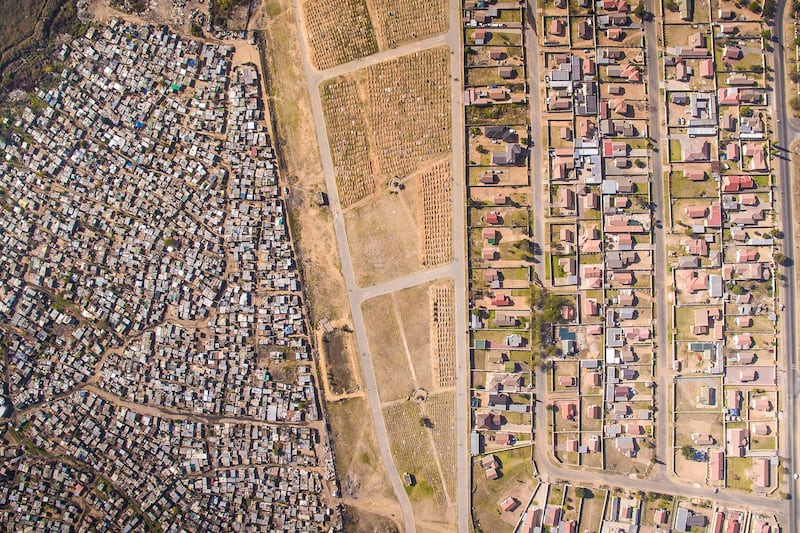
Unequal Scenes portrays scenes of inequality in South Africa from the air.
Discrepancies in how people live are sometimes hard to see from the ground. The beauty of being able to fly is to see things from a new perspective - to see things as they really are. Looking straight down from a height of several hundred meters, incredible scenes of inequality emerge. Some communities have been expressly designed with separation in mind, and some have grown more or less organically.
During apartheid, segregation of urban spaces was instituted as policy. Roads, rivers, “buffer zones” of empty land, and other barriers were constructed and modified to keep people separate. 22 years after the end of apartheid, many of these barriers, and the inequalities they have engendered, still exist. Oftentimes, communities of extreme wealth and privilege will exist just meters from squalid conditions and shack dwellings.
My desire with this project is to portray the most Unequal Scenes in South Africa as objectively as possible. By providing a new perspective on an old problem, I hope to provoke a dialogue which can begin to address the issues of inequality and disenfranchisement in a constructive and peaceful way
Johnny Miller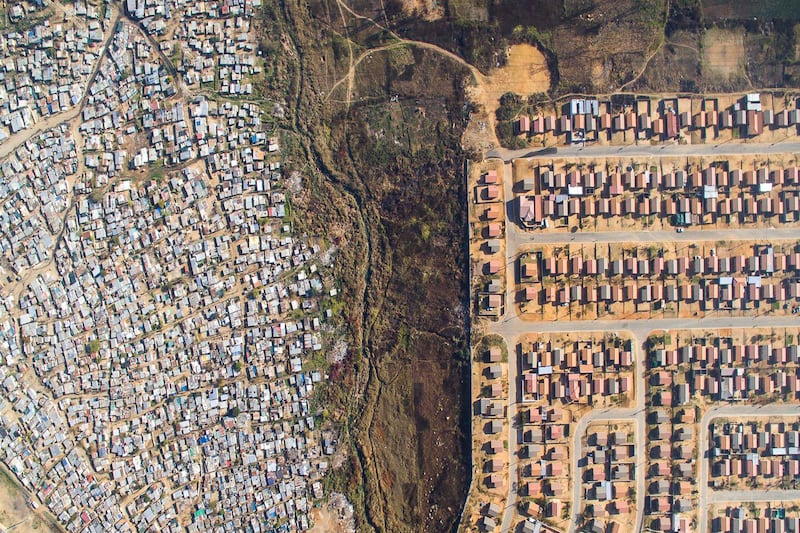
Vusimuzi settlement is in an interesting position. It protrudes like an isthmus between a fetid stream, a huge cemetery, and two slightly wealthier suburbs. High above the shacks, high-tension power lines carry electricity to other areas of Johannesburg, but not Vusimuzi. As one resident put it (in an article written in 2013), "Electricity flows above, but not below". Between Ehlanzeni and Vusimuzi, there are over 30000 people living in approximately 8500 shacks, on the margins of the former township of Tembisa, Gauteng. Service delivery, including sanitation, electricity, policing, and education, is extremely poor.
Between Ehlanzeni and Vusimuzi, there are over 30000 people living in approximately 8500 shacks, on the margins of the former township of Tembisa, Gauteng. Service delivery, including sanitation, electricity, policing, and education, is extremely poor.
Johnny Miller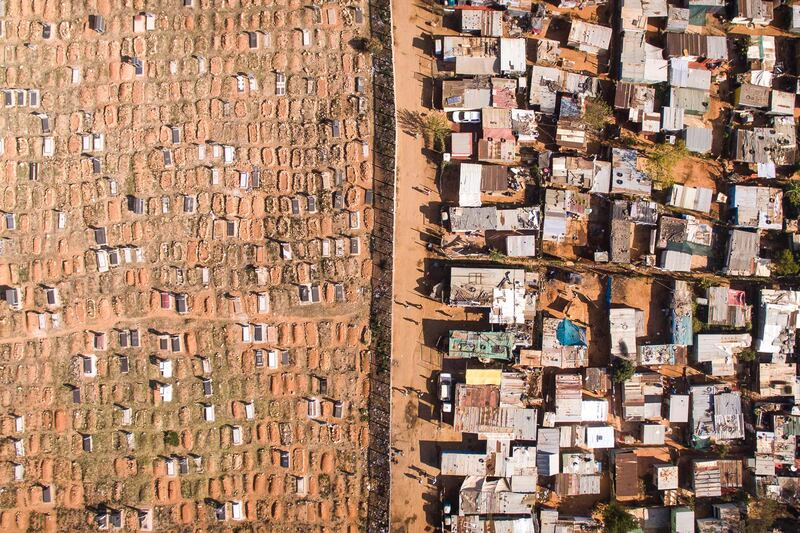
Contrasted to the greater province of Gauteng, Vusimuzi is an anomaly. Gauteng is the richest province in South Africa, and Johannesburg is the richest city. Gauteng contributes almost 1/3 of South Africa's total GDP, and is rapidly modernizing into a world-class city.
Johnny Miller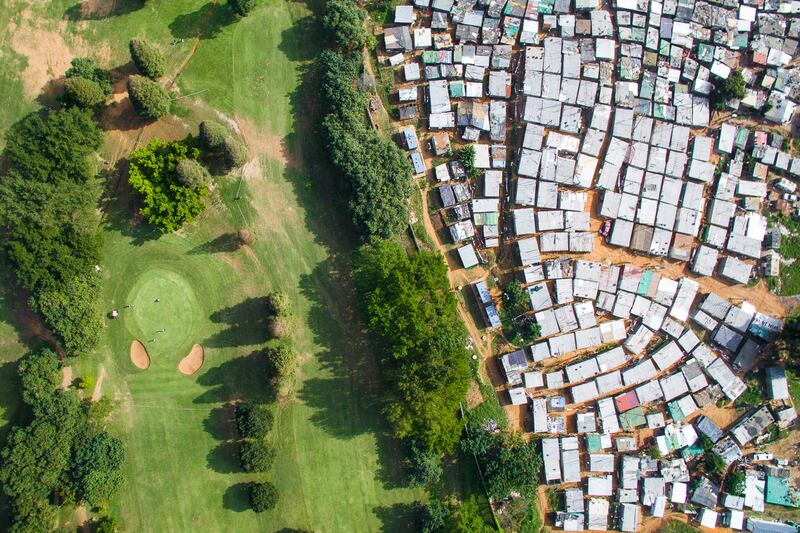
Papwa Sewgolum Golf Course is located along the lush green slopes of the Umgeni River in Durban. Almost unbelievably, a sprawling informal settlement exists just meters from the tee for the 6 hole. A low-slung concrete fence separates the tin shacks from the carefully manicured fairways. In a twist of irony, the golf course is named after an apartheid-era golfer of Indian descent, named Sewsunker “Papwa” Sewgolum. Papwa Sewgolum was an excellent self-taught golfer, with no formal schooling. He is famous for his reversed, cross-handed grip (called the “Sewsunker” grip even today). But he is possibly most famous for beating Gary Player and winning the 1965 Natal Open. The Natal Open was held at the Durban Country Club, which at the time did not allow non-whites into the clubhouse. Sewgolum won the tournament, the only non-white in a field of 113 players. At the time of the prize-giving, he had to receive his trophy outside, in the pouring rain, while the white players sat comfortably inside. The pictures of him in the rain were broadcast around the world, resulting in an international outcry and a number of countries imposing sanctions on South African sporting events.
Johnny Miller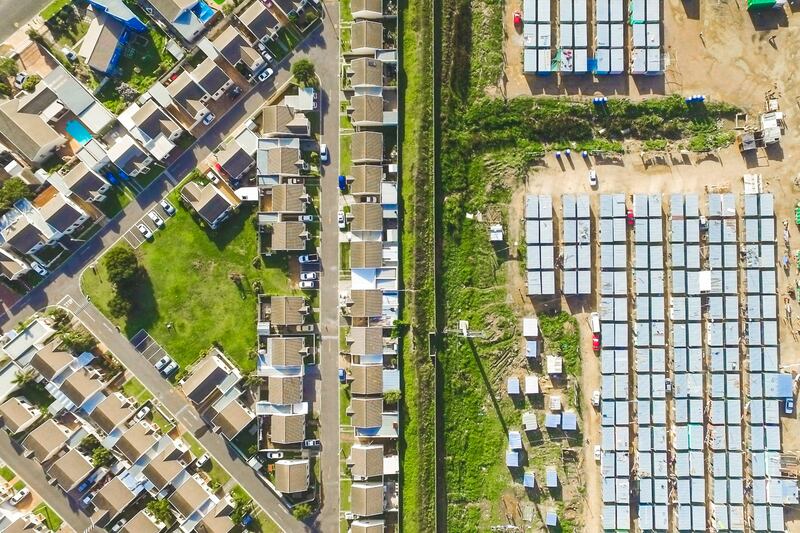
Nomzamo/Lwandle is a township bordered by the communities of Strand and Somerset West, about 40km east of Cape Town. Originally it was conceived of as an area to house “single male workers” during the apartheid years, in a type of accommodation known as “hostels”. The actual hostel structures were built in 1960 to accommodate about 500 male migrants who mostly came from the former homelands in the Eastern Cape such as Transkei and Ciskei. These men mostly came from the former homelands of Transkei and Ciskei in the Eastern Cape, working in farms and the fruit canning industry and other surrounding areas.





